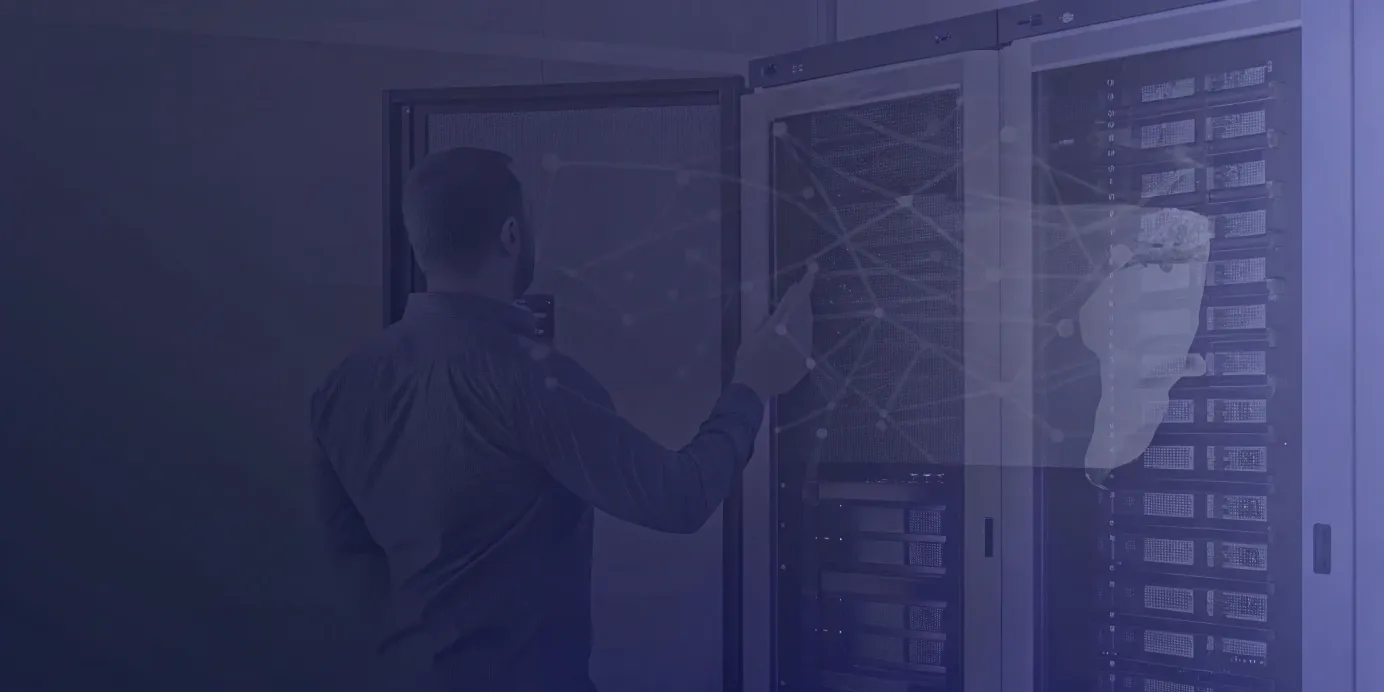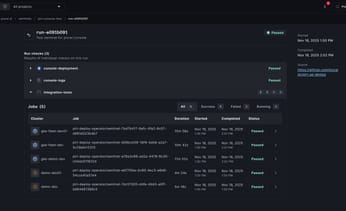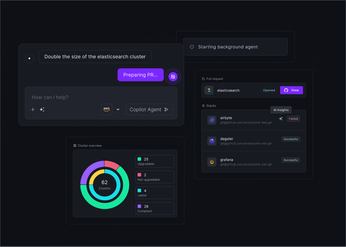
How to Detect Unusual Behavior in Kubernetes
Get practical strategies for detecting unusual behavior in Kubernetes, including key metrics, alerting best practices, and tools for proactive monitoring.
In a dynamic environment like Kubernetes, where pods are short-lived and workloads constantly shift, defining what “normal” means is far from trivial. Without that baseline, detecting anomalies becomes guesswork. A reliable performance baseline serves as the foundation for observability and incident response—it defines expected behavior so you can distinguish genuine issues from natural fluctuations.
This post explores how to build and maintain those baselines, the key metrics that reflect cluster health, and how to configure detection rules that surface meaningful deviations rather than noise. By grounding your monitoring strategy in a data-driven understanding of “normal,” you can achieve far greater confidence in diagnosing and resolving performance anomalies.
Unified Cloud Orchestration for Kubernetes
Manage Kubernetes at scale through a single, enterprise-ready platform.
Key takeaways:
- Define normal to detect abnormal: Establish a clear performance baseline by monitoring key resource, network, and application metrics. This data-driven benchmark is the only way to accurately identify meaningful deviations that signal real issues.
- Build an action-oriented response plan: Move beyond simple alerts by creating a full strategy. This includes configuring context-rich notifications to prevent alert fatigue, using GitOps for automated rollbacks, and integrating detection with existing security protocols for defense-in-depth.
- Standardize detection across your fleet: Managing anomaly detection across multiple clusters creates inconsistency and blind spots. Use a unified platform to standardize data collection, provide a single-pane-of-glass view, and ensure your detection system scales without impacting performance.
What Is Kubernetes Anomaly Detection
Kubernetes anomaly detection is the practice of identifying patterns or behaviors within a cluster that diverge from the established norm. Because Kubernetes environments are inherently dynamic, defining “normal” is not static—it evolves with workloads, scaling events, and deployments. Establishing a strong baseline for expected behavior is the essential starting point. With continuous monitoring of metrics, events, and logs, teams can detect irregularities that signal misconfigurations, performance bottlenecks, or security incidents. This shift from reactive troubleshooting to proactive detection enables predictive system management and more resilient operations.
Defining Unusual Behavior in Kubernetes
Anomaly detection depends on a clear understanding of baseline performance and activity. Once that baseline is defined, ongoing events can be compared against it to identify significant deviations. Anomalies may appear as a sudden increase in CPU or memory consumption, unexpected cross-service network traffic, or spikes in pod restarts and application errors. Detecting these deviations early helps prevent cascading failures and allows engineers to investigate root causes before issues become critical.
How Anomalies Affect System Health and Security
Ignoring anomalies can compromise both reliability and security. For example, an unexplained rise in resource usage might signal a memory leak or runaway process that eventually leads to downtime. Similarly, atypical network traffic could indicate a misconfiguration—or worse, a live intrusion attempt. As cloud-native environments grow in complexity and become prime targets for attackers, the ability to detect and interpret unusual patterns is vital. Effective anomaly detection safeguards uptime, optimizes resource usage, and strengthens your overall security posture.
Key Signs of Unusual Behavior
Detecting anomalies in Kubernetes starts with recognizing the subtle and overt indicators of abnormal system activity. These deviations often appear as changes in resource usage, network traffic, or workload stability. They don’t always manifest as outright failures—sometimes the signs are minor variations that precede major issues like misconfigurations, instability, or active intrusions. Monitoring these indicators helps teams transition from reactive troubleshooting to proactive defense, strengthening both reliability and security across the cluster.
Irregular Resource Usage
Sudden, unexplained changes in CPU, memory, or disk consumption are among the clearest indicators of abnormal behavior. Establishing a baseline for each workload’s normal resource profile is essential to interpret these fluctuations accurately. A sustained CPU or memory spike during off-peak periods could indicate a memory leak, unoptimized code, or even malicious activity such as cryptomining. Conversely, a sharp drop in utilization might mean a critical process or service has crashed. Simple static thresholds—like triggering alerts when CPU usage exceeds 90%—can catch obvious issues early, while adaptive baselines provide better detection for variable workloads.
Unexpected Network Traffic
Kubernetes applications typically follow predictable network patterns. Deviations from those patterns—such as a service account making repeated unauthorized API calls, generating a burst of HTTP 403 errors, or communicating with unknown IPs—often point to misconfigurations or security breaches. Unusual traffic across unexpected ports or between unrelated namespaces can signal lateral movement by an attacker. Implementing Kubernetes Network Policies to define and enforce allowed communication paths reduces the attack surface and limits potential damage if a compromise occurs.
Frequent Pod and Container Failures
In a healthy cluster, occasional pod restarts are expected, but recurring failure states like CrashLoopBackOff or ImagePullBackOff indicate deeper issues. These may arise from resource starvation, faulty images, misconfigured environment variables, or broken dependencies. Because Kubernetes generates a high volume of events, recurring failures in a specific deployment, namespace, or node should trigger immediate analysis. Identifying and addressing the cause early prevents cascading outages and improves workload resilience.
Potential Security Threats
Anomalous behavior is often the first sign of a security incident. Unexpected processes within containers, unauthorized file modifications, or privilege escalation attempts signal possible compromise. Real-time detection tools like Falco can monitor system calls and identify suspicious actions as they occur. Additionally, spikes in API errors or unexpected changes to RBAC roles can reveal privilege misuse or credential theft attempts. Continuous monitoring of these security-related signals is essential for maintaining control and trust in your Kubernetes environment.
Tools and Methods for Detecting Anomalies
Detecting anomalies in Kubernetes requires both the right tools and a well-defined detection strategy. Manual observation doesn’t scale in an environment where workloads are constantly shifting and thousands of metrics change by the second. Modern teams rely on monitoring platforms, statistical techniques, and machine learning to automatically surface the signals that truly matter. Together, these methods transform vast, noisy telemetry into actionable insight before performance or security issues escalate.
Using Monitoring and Visualization Tools
Observability data (metrics, logs, and traces) is the core input for anomaly detection. However, raw data is too dense to interpret directly. Monitoring and visualization tools aggregate and present this information through dashboards, graphs, and alerts, allowing engineers to quickly identify deviations in workload behavior. For example, a persistent CPU spike on a node or a drop in request throughput can be spotted at a glance.
Plural simplifies this process by offering a unified dashboard for your entire Kubernetes fleet. Instead of context-switching between multiple tools or clusters, you gain consistent visibility into workloads, nodes, and system health from a single interface—making it easier to detect and correlate anomalies across environments.
Applying Machine Learning Models
As systems scale, static thresholds lose effectiveness because “normal” becomes dynamic. Machine learning (ML) models address this by learning baseline patterns from historical data across metrics and time series. Once trained, these models can detect subtle or correlated deviations—such as rising latency tied to specific API calls—that would be nearly impossible for humans to identify in real time.
ML-powered anomaly detection also adapts to workload changes, reducing false positives and highlighting only meaningful deviations. This makes it an ideal approach for teams managing large, fast-evolving Kubernetes environments.
Using Statistical Analysis
Statistical anomaly detection offers a lightweight but powerful alternative to ML. By establishing baselines for normal activity—such as the average number of running pods or the expected range of memory usage—statistical rules can automatically trigger alerts when deviations exceed defined thresholds.
Tools like Falco apply this concept to runtime behavior. They define event-driven rules to detect suspicious activity, such as processes writing to sensitive directories or unexpected outbound network connections. When these rules are breached, Falco surfaces alerts immediately, providing real-time defense against both operational and security risks.
How Plural Simplifies Detection
Plural unifies these detection methods into a single, intelligent platform for Kubernetes fleet management. It delivers real-time observability through a centralized dashboard, enabling cross-cluster visibility and faster root-cause analysis. Beyond visualization, Plural applies AI-driven detection to analyze logs, metrics, and traces—automatically identifying anomalies, correlating related issues, and even suggesting remediation steps.
By integrating observability, automation, and AI, Plural helps teams evolve from reactive firefighting to proactive operations. The result is fewer false alarms, faster incident response, and more time for engineers to focus on building rather than debugging.
How to Build an Effective Detection Strategy
An effective anomaly detection strategy isn’t just about choosing the right tools—it’s about building a cohesive system for observing, alerting, and responding to deviations in behavior. In Kubernetes, where workloads are constantly shifting, this means combining baselines, intelligent alerting, automation, and integration with your existing security controls. The result is a proactive framework that surfaces anomalies early, limits their impact, and keeps your clusters running predictably at scale.
Establish Performance Baselines
Accurate detection begins with understanding normal behavior. Establishing performance baselines involves gathering and analyzing historical data to define what typical operations look like across metrics such as CPU and memory utilization, disk I/O, and API response times. This should include different operational contexts—normal workloads, traffic peaks, and maintenance windows. Once this baseline is in place, any significant deviation can be treated as a signal for further investigation. A well-defined baseline transforms raw telemetry into actionable context, helping teams separate natural variability from genuine anomalies.
Configure Smart Alerting Rules
Once you’ve defined normal, the next step is designing alerts that focus on what matters. Basic static thresholds often lead to alert fatigue, so modern detection strategies favor context-aware or dynamic rules. For example, rather than simply alerting when CPU usage exceeds 90%, you might trigger an alert only if it remains above that level for over 10 minutes outside of a defined batch processing window. Many observability platforms now support adaptive thresholds that automatically adjust based on historical data and time of day, ensuring alerts are relevant and actionable instead of noisy distractions.
Automate Your Incident Response
Detection is only useful if followed by swift action. Automating parts of your incident response pipeline shortens the gap between anomaly detection and remediation. Automation can handle simple corrective actions, like restarting a failed pod or scaling out a service, or more advanced workflows such as isolating a compromised node or triggering a rollback. Within Plural, you can integrate these responses directly through a GitOps workflow—automatically reverting recent configuration changes that caused instability and restoring the cluster to a known good state with minimal human intervention.
Integrate with Existing Security Protocols
Anomaly detection should complement—not replace—your existing Kubernetes security measures. Preventive mechanisms like Pod Security Standards and Network Policies form the first line of defense, while anomaly detection acts as a critical detection layer when those safeguards are bypassed. For example, if a misconfigured policy allows unexpected traffic, anomaly detection can catch the resulting behavioral deviation in real time. With Plural’s Global Services, teams can enforce consistent RBAC and security configurations across all clusters, maintaining a unified security posture. Together, these layers form a defense-in-depth model that strengthens both resilience and visibility across your Kubernetes fleet.
Critical Kubernetes Metrics to Monitor
Effective anomaly detection starts with focusing on the right metrics—the signals that reveal when your cluster deviates from healthy operation. By continuously monitoring key areas across infrastructure, networking, applications, and the control plane, you gain a complete picture of both system performance and security posture. These metrics form the foundation for building accurate baselines and detecting early warning signs of instability or compromise.
Plural’s embedded Kubernetes dashboard centralizes these insights across your entire fleet. With a single-pane-of-glass view, teams can easily correlate performance data from multiple clusters, reducing blind spots and surfacing anomalies that would otherwise remain hidden in a distributed environment.
Resource Utilization
CPU, memory, and disk I/O metrics are the foundation of cluster observability. Establishing baselines for each workload helps differentiate between expected peaks and abnormal spikes. For example, a persistent CPU surge could signal a runaway process or a cryptomining attack, while steadily increasing memory usage often points to a leak. Conversely, a sudden drop in resource consumption from a critical service may indicate an application crash or silent failure. Monitoring these metrics ensures workloads are performing efficiently and prevents resource starvation across nodes and namespaces.
Network Performance
Network metrics reveal how services communicate and can quickly expose performance bottlenecks or security risks. Key signals include throughput, latency, and connection errors. Unusual traffic patterns—such as unexpected outbound traffic to unfamiliar IP addresses or repeated connection timeouts—often indicate deeper issues like data exfiltration or misconfigured NetworkPolicies. Continuous analysis of network flows helps detect both operational inefficiencies and potential intrusions, allowing for rapid containment of abnormal behavior.
Application Health
Application-level metrics complete the picture by providing visibility into user-facing performance. Indicators such as error rates (HTTP 4xx and 5xx), request latency, and transaction throughput reflect how well services are functioning under real-world conditions. For instance, a spike in 5xx errors after deployment may suggest a regression or misconfiguration, while increasing latency over time can reveal scaling or dependency issues. Monitoring these signals is critical for maintaining reliability and quickly identifying degradations that impact end users.
Control Plane Status
The control plane orchestrates all cluster activity, so its health directly affects every workload. Tracking the performance of components like the API server, etcd, scheduler, and controller manager is essential for cluster stability. Warning signs include elevated API latency, frequent etcd leader changes, or an increasing number of unschedulable pods. You should also monitor for unauthorized configuration changes or RBAC modifications—common indicators of attempted privilege escalation. Maintaining continuous visibility into control plane operations ensures that Kubernetes remains both reliable and secure under load.
Best Practices for Anomaly Detection
Building a dependable anomaly detection system in Kubernetes requires more than deploying monitoring tools—it demands a structured approach to data quality, alert management, response planning, and scalability. By following key best practices, you can ensure your detection framework identifies meaningful anomalies, minimizes noise, and grows seamlessly with your environment.
Ensure High-Quality Data Collection
Anomaly detection is only as accurate as the data feeding it. Kubernetes clusters generate vast amounts of telemetry—metrics, logs, and traces—that can be incomplete or inconsistent across nodes. To create a reliable baseline of normal behavior, you need consistent, high-quality data ingestion across all clusters. A unified observability platform like Plural helps standardize data collection, ensuring that metrics and events are normalized and aggregated in one place. Clean, comprehensive data reduces false positives and strengthens the accuracy of your baselines.
Manage Alerts Effectively
Alert fatigue is one of the biggest challenges in large-scale environments. Too many alerts—and too few meaningful ones—can cause real issues to go unnoticed. Each alert should deliver actionable context: what’s happening, which component is affected, and how to respond. Replace rigid static thresholds with dynamic baselines that adapt to normal workload fluctuations. When alerts trigger, Plural’s embedded dashboard enables engineers to investigate immediately, with secure access to the affected clusters. This tight feedback loop shortens mean time to resolution (MTTR) and eliminates the overhead of context switching between monitoring tools.
Define Clear Response Protocols
Detection without a defined response plan leads to confusion and delays. Establishing clear incident response protocols ensures consistency across teams. Each alert should have predefined procedures for triage, escalation, and remediation. Integrating detection with GitOps workflows provides a structured and auditable response mechanism. For example, if a deployment introduces a performance regression or security anomaly, you can revert the relevant commit, allowing automated CI/CD pipelines to roll back to a known stable state. This reduces human error and accelerates recovery.
Scale Your Detection Systems
As clusters multiply, telemetry volume grows exponentially. A detection system that works for a handful of clusters may fail under larger workloads. Your observability architecture must be designed for horizontal scalability, capable of collecting and processing massive data streams without latency or data loss. Plural’s agent-based pull architecture enables scalable anomaly detection across fleets of any size, maintaining consistent visibility and performance as your infrastructure expands. This scalability ensures your monitoring and alerting systems remain effective without costly re-engineering as your environment evolves.
How to Overcome Common Challenges
Detecting anomalies in Kubernetes is not without its difficulties. From noisy alerts to performance overhead, engineering teams often face several hurdles when implementing a detection strategy. Addressing these issues head-on is critical for building a system that is both effective and sustainable. Here’s how to tackle some of the most common challenges.
Reducing False Positives
A constant stream of false alarms can make any anomaly detection system useless. These alerts, which flag normal behavior as malicious, often stem from poorly configured rules that don't understand the application's context. Kubernetes helps by letting you set very specific rules for what an application can and cannot do. Using features like NetworkPolicies and security contexts, you can define a tight baseline for normal operations. This helps your detection system distinguish between a real threat and an unusual but harmless event. With Plural, you can use GitOps to manage these configurations consistently across your entire fleet, ensuring that every cluster adheres to the same strict security posture and reducing the configuration drift that leads to false positives.
Preventing Alert Fatigue
When engineers are bombarded with low-priority alerts, they start to ignore them—a phenomenon known as alert fatigue. This is dangerous because a critical alert could get lost in the noise. The key is to make alerts more meaningful by enriching them with context. Instead of just saying "High CPU usage on pod X," a useful alert provides details about the service and the recent deployment that might have caused it. This helps engineers understand the threat faster. Plural’s unified dashboard centralizes this information, providing a single view of deployments, infrastructure changes, and application metrics, which gives your team the context they need to quickly assess and act on alerts.
Addressing Poor Data Quality
Effective anomaly detection depends on clean, consistent data. However, Kubernetes environments often produce messy, incomplete, or inconsistent data, which makes it hard for detection systems to work well. Different applications might have different logging formats, and metrics can vary between clusters. To solve this, you need robust tools to collect and normalize data from all sources. Plural simplifies this by allowing you to deploy and manage a standardized observability stack—like Prometheus and Grafana—from our open-source marketplace. By ensuring every cluster uses the same configuration for data collection, you create a high-quality, reliable data pipeline that feeds your anomaly detection models with the information they need to be accurate.
Optimizing Resource Consumption
Monitoring tools are essential, but they shouldn't consume so many resources that they degrade application performance. Anomaly detection systems, especially those using machine learning, can be CPU and memory-intensive. This overhead can increase operational costs and impact the user experience. Proactive detection helps stop problems before they cause major outages and ensures that compute resources are used efficiently. This approach saves money and improves system performance. Plural’s agent-based architecture is built for efficiency, using a lightweight agent in each workload cluster. This minimizes the performance footprint of management and monitoring tasks, ensuring that your anomaly detection strategy is both effective and sustainable without adding unnecessary operational overhead.
Related Articles
- AI-Powered Anomaly Detection for Kubernetes 101
- Troubleshoot Kubernetes Deployments: An AI-Powered Approach
Unified Cloud Orchestration for Kubernetes
Manage Kubernetes at scale through a single, enterprise-ready platform.
Frequently Asked Questions
How is anomaly detection different from the basic threshold alerting I already have? Standard threshold alerting is static; it triggers when a single metric crosses a predefined line, like CPU usage exceeding 90%. Anomaly detection is more intelligent because it first learns your system's normal operational rhythm, including its daily and weekly cycles. It then flags deviations from that established pattern, allowing it to catch subtle issues, like a gradual memory leak or unusual network activity, that a simple static threshold would completely miss.
We're worried about alert fatigue. How can we implement this without creating a ton of noise? The key to reducing noise is to make your definition of "normal" as precise as possible. This involves using Kubernetes features like NetworkPolicies and security contexts to tightly restrict what an application is allowed to do. When you manage these configurations consistently across your fleet using a GitOps workflow, you create a strong, uniform baseline. This reduces the ambiguity that leads to false positives, ensuring that alerts are triggered by genuine deviations from expected behavior.
What's the most important first step to building an effective detection strategy? The first and most critical step is to establish a solid performance baseline. You cannot identify abnormal behavior if you don't have a clear, data-backed definition of what is normal for your environment. This means systematically collecting high-quality data on key metrics—like resource utilization, application error rates, and network traffic—over a meaningful period to understand the typical patterns of your applications during different cycles of activity.
Do I need a data science team to use machine learning for anomaly detection? Not anymore. While you could build custom models from scratch, many modern platforms integrate these advanced capabilities directly into their tooling. Plural, for instance, uses AI to automatically analyze operational data from your clusters, identify potential issues, and even suggest remediation steps. The goal of such platforms is to make sophisticated detection techniques accessible to DevOps and platform engineering teams without requiring specialized data science expertise.
How does this strategy scale from a few clusters to a large fleet? Scalability is determined by your underlying architecture. A centralized system that constantly pulls large volumes of telemetry data from every cluster can quickly become a bottleneck. A more scalable approach is an agent-based architecture, which is what Plural uses. A lightweight agent runs within each workload cluster, handling data collection and execution locally. This distributed model ensures that your detection capabilities can grow with your fleet without creating performance issues or requiring a constant re-architecture of your monitoring stack.
Newsletter
Join the newsletter to receive the latest updates in your inbox.









